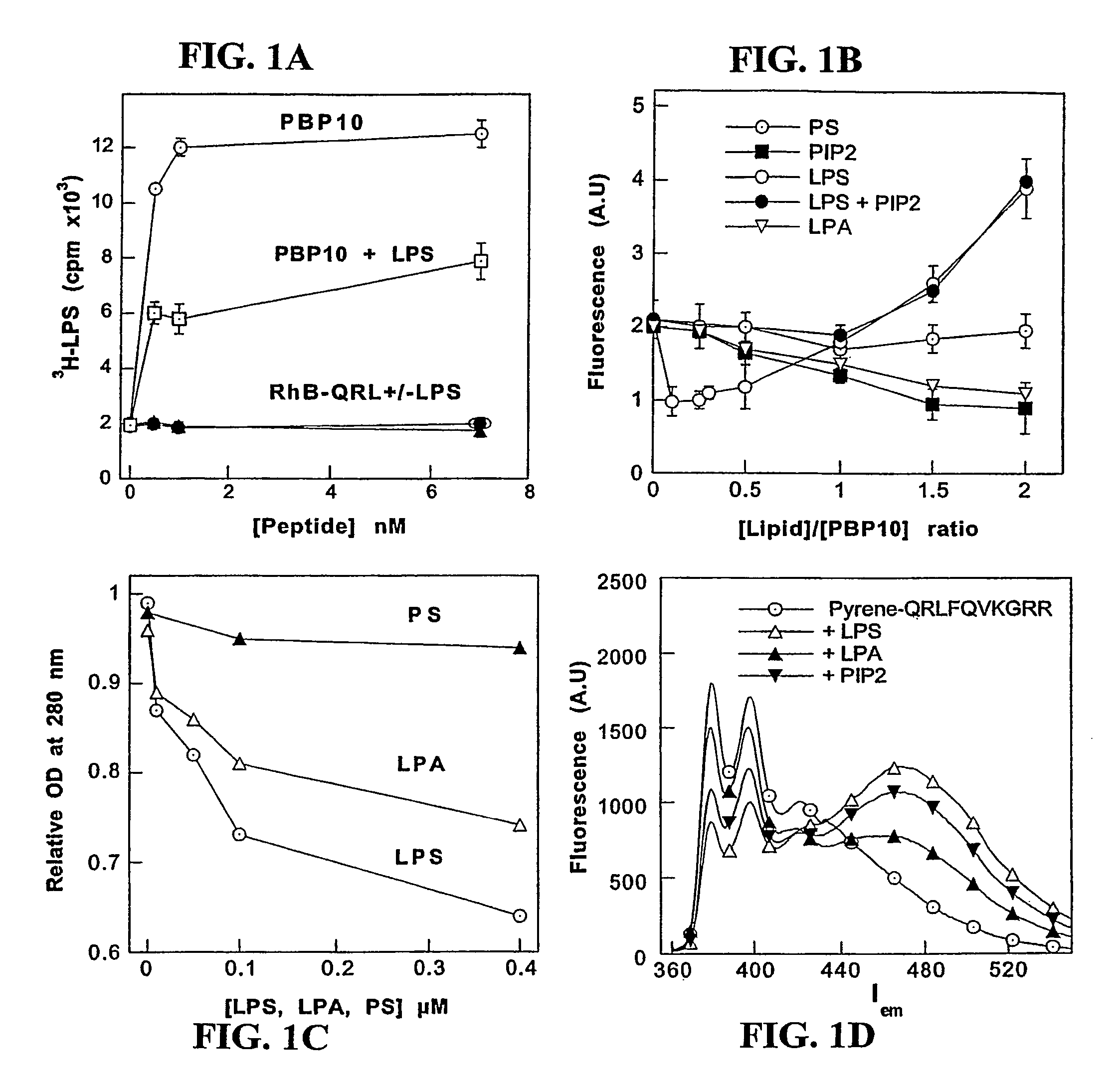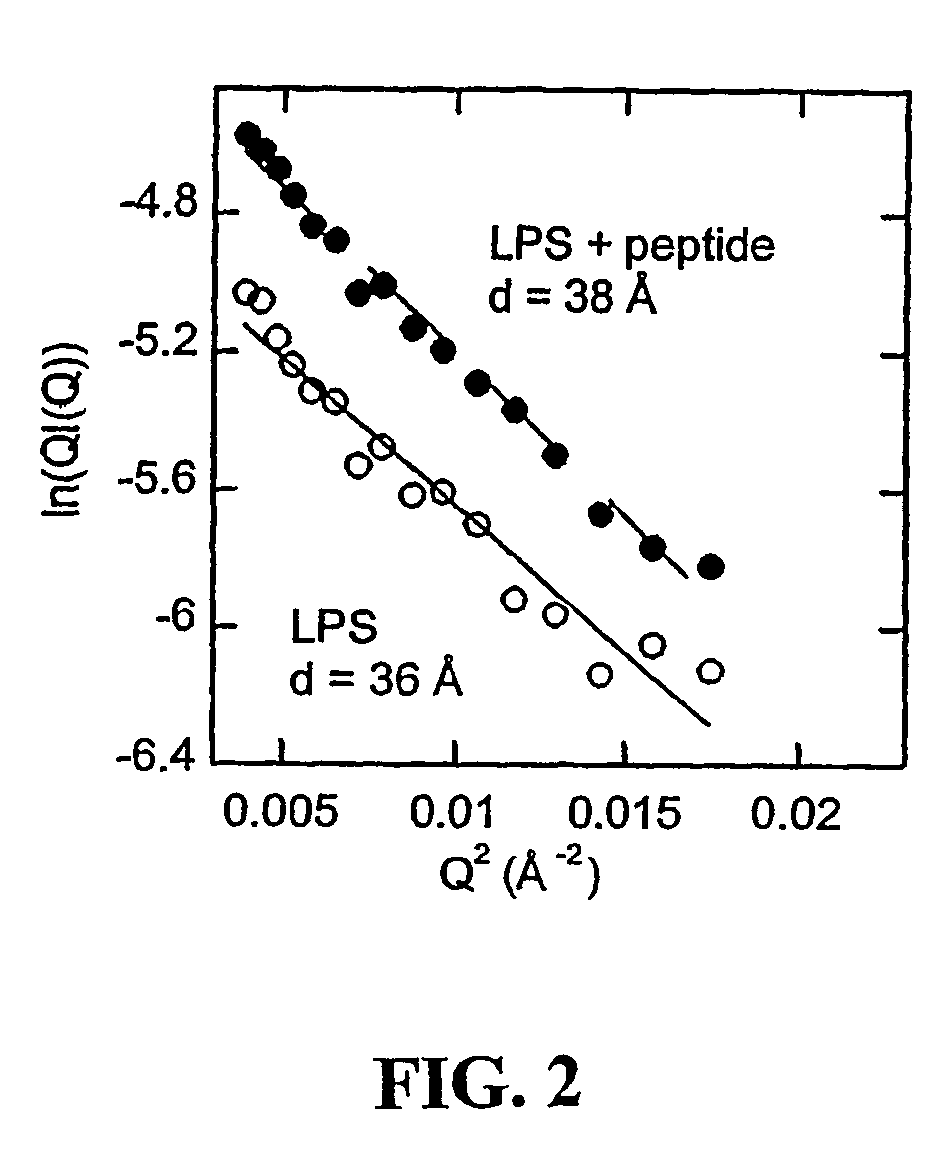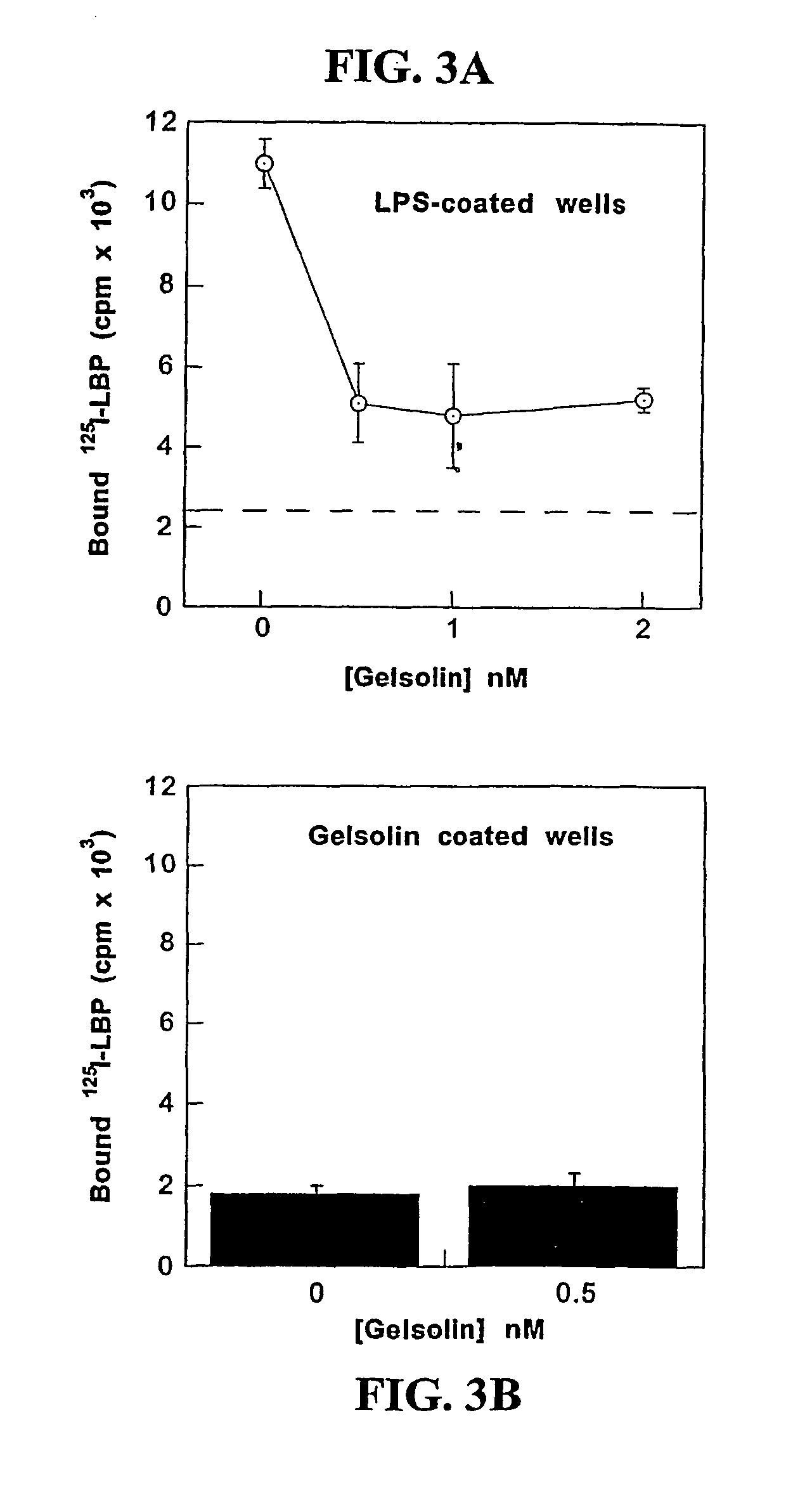Methods of using gelsolin to treat or prevent bacterial sepsis
a technology of gelsolin and sepsis, applied in the field of mammals' methods of treating, preventing or neutralizing septic shock, can solve the problems of further blocking, reducing or ameliorating bacterial lps- or lta-induced disruption of mammalian cellular responses or formation of toxic structures, and achieving the effects of preventing irreversible tissue damage, preventing microvascular dysfunction, and increasing microvascular permeability
- Summary
- Abstract
- Description
- Claims
- Application Information
AI Technical Summary
Benefits of technology
Problems solved by technology
Method used
Image
Examples
example 1
Gelsolin Binding and Severing Capabilities
[0095]Binding Activity
[0096]To provide chemical and functional evidence that gelsolin binds LPS through its lipid-binding domain, a solid phase assay was conducted in which radiolabeled LPS was added to wells coated with different amounts of rhodamine-B-labeled-SEQ ID No:1 (rhodamine-B-QRLFQVKGRR, derived from the PIP2-binding site of gelsolin and termed “PBP10”), or to a truncated peptide (rhodamine-B-QRL), in the absence or presence of unlabeled LPS, respectively.
[0097]SEQ ID No:1 (QRLFQVKGRR) gelsolin residues 160-169, and QRL peptides, were prepared by solid phase peptide synthesis on p-benzyloxybenzyl alcohol / polystyrene resin using alpha-Fmoc protection chemistry and carbodiimide / N-hydroxybenzotriazole coupling as taught by Cunningham et al., J. Biol Chem 276:43390-9 (2001)). The side chains were protected as follows: Arg (Pmc), Gln (Trt), Lys (Boc). To couple fluorophores onto these peptides, ester derivatives of each fluorophore were...
example 2
Gelsolin Competes with LPS-binding Protein (LBP) for LPS
[0111]To determinate whether gelsolin can effect an action similar to LBP-mediated incorporation of LPS into blood lipoprotein an experiment is utilized, in which repartition of Bodipy- or 3H-labeled-LPS to reconstituted HDL (R-HDL) or plasma lipoproteins is measured. R-HDL is prepared by mixing apo A-1, egg PC, cholesterol and cholate at molar ratio 1:80:4:80 followed cholate dialysis as previously described by Yu et al., 1997, supra. The fluorescence of Bodipy-LPS in micelles is quenched, but quenching is relieved and fluorescence increases upon movement of Bodipy-LPS monomers out of aggregates. An increase in fluorescence is observed when both gelsolin and R-HDL are mixed with Bodipy-LPS provides evidence for gelsolin-depended transfer of LPS to R-HDL, similar to that seen with LBP. Pure LPS and various amounts of gelsolin are added to observe if gelsolin alone changes the Bodipy-LPS fluorescence, since any such change will ...
example 3
Gelsolin's Actin Filament Severing Activity and Effect of LPS
[0115]To determine gelsolin's severing activity, rates of fluorescence decrease were evaluated during depolymerization. Monomeric G-actin was prepared from an acetone powder of rabbit skeletal muscle according to previously published methods (Spudich et al., J. Biol. Chem 216:4866-4871 (1975)). The non-polymerizing solution contained 2 mM TRIS, 0.2 mM CaCl2, 0.5 mM ATP (adenosine triphosphate), 0.2 mM DTT (dithiothreitol) pH 7.4. Actin was polymerized by adding 150 mM KCl and 2 mM MgCl2 to the G-actin solutions and incubating for 1 hour at room temperature.
[0116]For F-actin severing assays, in general, a small volume (typically 5 μl) of the gelsolin composition is added to a similar volume of pyrene-labeled F-actin at a concentration adjusted to provide an actin:gelsolin ratio of approximately 10:1 (typically 1 μM gelsolin and 10 μM actin). This mixture is the diluted to 0.5 μM in a larger volume of F-actin buffer, and the...
PUM
| Property | Measurement | Unit |
|---|---|---|
| concentrations | aaaaa | aaaaa |
| concentration | aaaaa | aaaaa |
| concentrations | aaaaa | aaaaa |
Abstract
Description
Claims
Application Information
 Login to View More
Login to View More - R&D
- Intellectual Property
- Life Sciences
- Materials
- Tech Scout
- Unparalleled Data Quality
- Higher Quality Content
- 60% Fewer Hallucinations
Browse by: Latest US Patents, China's latest patents, Technical Efficacy Thesaurus, Application Domain, Technology Topic, Popular Technical Reports.
© 2025 PatSnap. All rights reserved.Legal|Privacy policy|Modern Slavery Act Transparency Statement|Sitemap|About US| Contact US: help@patsnap.com



